Note
So you come closest to my practice of anyone I've ever seen.
Sometimes time slows down and for a moment i can see up and down the threads of time and know that i am -exactly- where i need to be at exactly the right time. Well for the first time for ages it's happened. In that moment i can feel how grounded i am and i know i will not be moved from my path.
Does that happen to you? Or anyone you know?
Hi! I feel honored that you've come to me with that question, and I am glad to hear that our practices are so similar! It appears to me that you are very well connected to your own "fate", or wyrd, however you may view this concept. I have never glimpsed at it the way you do and have never heard of such an ability! For this reason, I'm unfortunately unable to give you much information on that phenomenon. You may want to look up spiritual resources that pertain to fate, predestination or the wyrd! I have gathered a few for you to check out, if you are interested in learning about this topic.
Fate, as viewed by ancient germanic peoples
Fate and free will from a pagan perspective
Paper on Scandinavian belief in fate (pre and post-christianity)
Thoughts on predestination by Joanna Van Der Hoeven on DownTheForestPath
I hope this helps a little! Thank you so much for sharing this experience.
31 notes
·
View notes
Text
On Álfablót and honoring the Álfar
"It appears even that to these black elves in particular, i.e., mountain spirits, who in various ways came into contact with man, a distinct reverence was paid, a species of worship, traces of which lasted down to recent times. The clearest evidence of this is found in the Kormakssaga p. 216-8. The hill of the elves, like the altar of a god, is to be reddened with the blood of a slaughtered bull, and of the animal's flesh a feast prepared for the elves....An actual âlfabôt. With this I connect the superstitious custom of cooking food for angels, and setting it for them. So there is a table covered and a pot of food placed for home-smiths and kobolds; meat and drink for domina Abundia; money or bread deposited in the caves of subterraneans, in going past."
- Jacob Grimm, “Teutonic Mythology”.
41 notes
·
View notes
Text

Just in time for Samhain (Vetrnaetr)!
This challenge is meant for you to develop your bond with a chosen deity, or deities. Indeed, you can use it to honor as many deities as you want. You could choose a single deity to devote this challenge to, or you can switch it up as you go and devote certain days to certain deities! Since this challenge’s goal is to improve one’s connection to a deity/deities, it won’t require of you to do any active magical work or elborate ritual. These are all simple actions that can fit into your schedule easily. Enjoy!
Seguir leyendo
670 notes
·
View notes
Text
Inviting a deity to join you,
As a follow up to my 20-day deity work challenge! (day 11)

Context
Sometimes when I feel unexpected enjoyment during an activity, I feel the urge to invite a deity to “join me”, so to speak. In my personal practice, I create a distinction between “invoking” and “inviting”. The way I choose to see it is that the former serves as a formal summoning. During a group/individual ritual (during holidays, for example), one/many may invoke a deity by openly calling out to them and reciting a formal request for them to enter the circle. Inviting, on the other hand, is casual and informal. Instead of asking the deity to attend an event, you may simply suggest that they join you, as you believe they would enjoy the activity you are engaging in. For example, if you merely want to share a day to day activity which you like, then a ritualistic invocation is not necessary. A candid invitation would be more indicated. Why so? Because you’re simply and respectfully presenting the deity with whatever the activity is, leaving them the choice to join you or not. Moreover, inviting is a lot easier when you are unprepared for a formal invocation!

How to invite a deity
There are a few ways I favor when it comes to calling a deity to my side. The first would be to simply whisper their name, while envisionning them as clearly as I can. I try to put as much of my intent as I can into that simple name (meaning I attempt to communicate my invitation through it). After this step, I focus all the more actively on the activity I am engaging in, as if I wanted the deity to see through my eyes and to experience it as I do. If they do choose to join me and appreciate what they see, then they will stay by my side for while. Another simple way to invite a deity would be to light a candle for them as you’re practicing the activity, especially if they have a dedicated candle. Same goes: if they have a dedicated song, then play it! If they have a dedicated piece of jewelry, wear it.

Examples of more or less specific activities a deity may want to join in on
Watching fireworks, a sunrise, a sunset, a bonfire
Cooking something they enjoy, like a meal they are associated with
Hiking in the woods/mountains, or by the beach
Gathering herbs, mushrooms, flowers, leaves, etc…
Meditating
Driving through the countryside
Any creative activity! Drawing, painting, sculpting… Especially if they are a deity of the arts, or inspiration.
Listening to music, or attending a concert.
Visiting a museum or gallery (especially when the exhibition is centered around their related culture!)
Watching a movie you think they might enjoy
Doing a general divination reading, like your weekly tarot card pulling
Exploring a new place
Any moment when you’re unexpectedly having fun/experiencing happiness

Art: The Briar Wood, Lily Seika Jones
381 notes
·
View notes
Text
Script of my 2023 blót to the Vanir on May Day!
[Light bonfire. Light incense and cleanse the representations of the Vanir]
“We make this blót in honor of the glorious Gods of the Vánaland, who nourish the soils, blow the winds of the fertile season, and make the land to come alive each year. We summon you, Lords and Ladies of plenty. Cast your divine gazes upon us, for we are prepared to strengthen our bond with you through sacrifice.”
[Offering up the food and other offerings]
“Praised is the name of Njörðr, Tide-Maker, Wind-Blower, Bestower of Wealth; whose blessings are many. Til árs ok friðar”
[selected prayer to Njörðr is recited, then all toast] “Hail!”
“Praised is the name of Freyja, Lady of the Slain, of the Tears Golden, ruler of Fólvangr; whose blessings are many. Til árs ok friðar”
[selected prayer to Freyja is recited, then all toast] “Hail!”
“Praised is the name of Yngve-Frej, King of the fertile season, Ruler of Spring and of Álfheimr, Weaponless Lord of Peace, whose blessings are many. Til árs ok friðar”
[selected prayer to Freyr is recited, then all toast] “Hail!”
“The light of this day now wanes: the sun sets as we advance to the nightless time. Divine rulers of the Vánaland, receive this gift, and our prayer for a summer that is prosperous, warm and plentiful. Bring forth the rains that come down in torrents, bring forth the sun which feeds the land, and bring forth the seed from which all life is born. Bring forth the blessings of this season, and fertilize our land.”
54 notes
·
View notes
Text
Ideas for blót preparations: a brainstorm

A heap of simple ideas for when you don’t know where to start with preparing celebrations, festivals of offering rituals!
Decorating using handicrafts
Ritual of purification of the body (bath, etc)
Making or printing art that depicts the deity/deities
Planning some safe herbs or resin to burn
Planning a playlist!
Decorating statue of the deity/deities
Cooking or baking food to offer
Preparing ritual bowl or cup in which to pour libations
Learning a poem, prayer or song to recite
Writing down what you’re grateful to the deity/deities for
Writing down things you wish for
Tracing runes your on skin that are related to the deity/deities, or to something you wish for, to focus intent
Cleasing area using method of choice!
Researching historical practices for specific times of year
Planning a source of fire (candles, bonefire, etc!)
Is there an object or a project you want the deity/deities to bless? Why not bring it, or a symbol of it and ask?
Holding a little divination session to ask questions about the coming months
Writing down invocations for the deity/deities
For group celebrations:
Writing up a script, and/or schedule
Potluck!
Preparing a bonfire
Planning for everyone to read a prayer, or any devotional text
Exchange of blessings or good wishes!
61 notes
·
View notes
Text
Script for a blót to Freyr

We honor today the son of Njörðr:
He who sits on the throne of Álfheimr,
He who’s love burns bright,
He who travels like the wind,
And who, for the giantess Gerðr,
Has laid down his sacred sword.
Praise be the Guardian of the fertile season:
Praised be his holy name:
Yngvi-Freyr, Kinsman of the Vanir,
Who makes the earth come to life.
Hear us call your name,
King of Kings, paragon of peace,
Who rules the land of elves,
And listen well:
All who step on land
Walk in your sacred garden
In which bloom every plant
And where all lives are lived.
We light fires as offerings
Where we sacrifice today
That which was freely given
By your endlessly generous hand.
For we know of your gift:
The winds, the soils and the seasons
All follow you in your dance
And are thus roused from winter’s sleep.
We call to you in devotion and love:
Come forth, God of Wealth-Gifts,
Come forth and fill the land with seed,
And bless us with a prosperous summer!
97 notes
·
View notes
Text
10 simple steps to celebrating Álfablót!
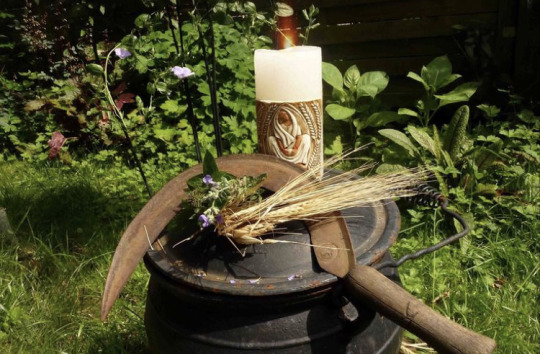
Autumn is almost upon us! I hope you guys are as excited for it as I am. I have a whole bunch of fun little posts prepared concerning all things pagan and/or heathen that are of interest, this season. Álfablót is one of my personal favorites when it comes to harvest celebrations! It can pretty much be viewed as the culmination of the harvest season cycle. If, like me, you scatter offerings to the álfar and the Vanir across the summer, then this will most probably be your last harvest offering for the year (quite like Samhain, though the two are entirely different celebrations). Might as well make it count!
Depending on your beliefs and personal preferences, you may want to make your offerings to the álfar, your dísir, the landvættir or any other land spirit of your choosing for that matter, the Vanir, and even all of the above. What matters most is your gratitude! It’s the main point of this ultimate harvest offering: a last “thank you” to the deities and spirits who grant us prosperity of the land. The way I see it, however, gratitude comes in many, many shapes! For example, if you’re someone like me who likes to garden and grow your own veggies and herbs, you can express during Álfablót your gratitude for a plentiful summer, and ask for another good harvest for the next year. If you’re someone who works with a specific spirit (or spirits), you can choose to take a much more personal approach and personally thank them for their guidance throughout the year. This can also be done if you feel close to this or that Vanir deity!
The second most important aspect of the celebration to keep in mind for Álfablót is sacrifice! Scary word, I know. But it’s crucial to the very idea of blót. I’d go as far as to say that one is pretty much synonymous to the other. But it’s nothing to feel nervous about: sacrifice in the context of a mordern-day blót is really quite simple! A sacrifice is the offering of something that’s yours and which you willfully let go of in honor of this or that deity/spirit! This can be a piece of food, a drink, an object and the like. Either something you already own or something you bought for the occasion! During harvest season celebrations, my sacrifices usually consist of a few veggies or bundles of herbs harvested in my garden. It’s also possible for those who don’t garden to offer something similar, by offering seasonal products bought from local farmers! If such sacrifices are not in the cards for you, it’s also possible to save part of your dinner as an offering for the blót. It serves to represent your appreciation of the gifts of the earth! As you were given good food by the harvest spirits, you are also ready to give back to them in thanks!
But enough with the chatter, let’s jump straight to the practicalities! Once more, I’d like to say that these are all ideas and activities I personally enjoy engaging in for an Álfablót. So please feel free to custom any of these to your needs or just to use this sort of template as simple inspiration!
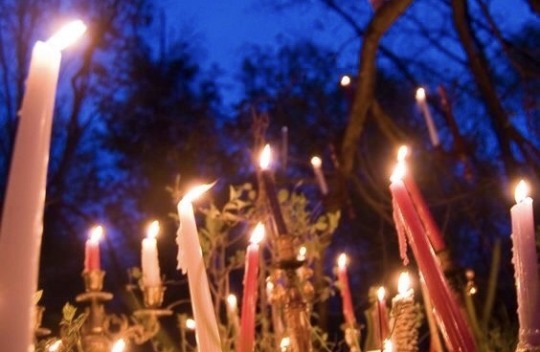
1. Before the sacrifice and the celebration, I usually like taking a moment to meditate on the upcoming event! I sit still and put on some music which reminds me of the season, or the Gods I will offer to. Then I close my eyes and take a quick moment to gather my thoughts concerning the blót: who am I honoring? What am I grateful to them for? What do I wish for in the upcoming seasons? Etc! It’ll clear your mind and put you in the autumn spirit for sure!
2. If you celebrate with friends or family, every one can contribute a meal or a piece of food, such as corn, soup, bread, a dessert, some beer, etc etc… Homemade and/or seasonal will further honor the gifts of the land! If you celebrate alone, why not try to prepare one such meal and save some of it for offering!
3. Before the sacrifice, put some music on, sip a drink, have some fun, get into the celebration spirit in honor of Álfheimr and of Freyr!
4. When the sun is close to setting, light a bonfire. If you don’t have access to a safe outside space in which to start a fire, lighting a hearth or a simple candle are also options.
5. Effigies or representations of the Gods/spirits honored (for example a statue, a phallic symbol, a picture or even just a symbolic object) may be anointed using your preferred method of cleansing, such as incense or ritual oil. The Gods and spirits can then be formally invited to join the celebration, for example, using an invocation.
6. In a group setting, everyone then recites something for the honored deities: something they’re grateful to them for, a prayer, a poem, a song, etc… The same can be done if you’re alone (with the option of reciting more than one of these, of course).
7. Offerings of harvested greens, flowers, written prayers and the like are cast into the fire one by one to be received by the Gods of harvest! I think I don’t need to mention how offerings of alcohol shouldn’t be cast into the fire, for obvious reasons. I usually prepare a ritual bowl and place it upon my hörgr so that libations may be poured in it instead!
8. Time to feast! A toast and a blessing are made in honor of the álfar before eating starts.
9. Seasonal foods I enjoy during Álfablót celebrations: meat pies, roasted veggies, squash, boar meat in honor of Yngvi-Freyr, spicy or creamy soups, craft beers, cold pasta salads, red and white wines, garlic buttered bread, anything pumpkin or apple, ginger flavored sodas or alcohols…
10. Bonus! If you’re a fan of journaling, it’d be fun to note down your impressions of the celebration and ideas for the next!

80 notes
·
View notes
Text
I think part of the journey to polytheist fulfillment is to constantly try to deepen your understanding of a deity. Deities are complex, and you can keep learning from them day by day. Such an exercise may sound complicated when you put it that way, but fear not: it can be as easy as it is fun! That’s right, I said fun! To give you an over-simplified example of this concept, I’ve put together a few questions, just to inspire you guys and help you think about a deity you love. Just think, ponder. After all, that is always the very first step to building a bond with a deity. Without further ado, the questions:
If you were to write a story about them, what would it be about?
What is a feeling, or emotion you associate with them?
Do certain childhood, or later memories remind you of them?
Based on your personal experiences with them, how do you picture their personality?
Which areas of your life have improved since you started worshiping them?
My personal advice to someone who’s looking to answer these types of questions seriously would be to write their answers down. Especially if you’re someone who’s interested in journaling, this is the perfect occasion to take down a few notes! Writing down your answers to these makes for a wonderful entry, and it’s also the most efficient way to organize your thoughts and to better remember them!
353 notes
·
View notes
Text
A gratitude ritual to the elves
(For the autumn season!)
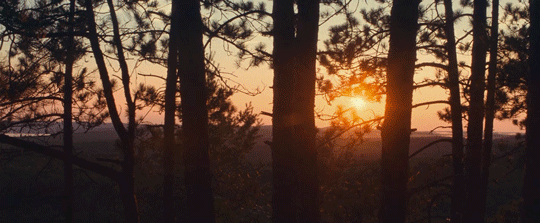
This is a ritual that I’ve created some two years ago, as a gesture of thanks and acknowledgement to the álfar as land spirits. It acts as the “closing ceremony” for the harvest season, so it could be fun for you to perform it on Samhain if you celebrate, or on your preferred date to perform the Álfablót. It’s made up of three major steps; the offering of drink, the offering of food and the burning of autumn symbols, all of which are separated by invocation and prayer. Without further ado, I will detail the ritual.
The first step? To bake/cook/prepare your offerings of food and drink. I think it’s important to incorporate local seasonal ingredients, as they come directly from the land you live on and therefore, can be considered gifts from the harvest Gods and spirits. Examples of seasonal drinks might be cider (apple juice also does the trick if you’re alcohol-free!), mead, mulled wine, spiced drinks and the like. Seasonal foods might be include apple, pumpkin, corn, squash, etc…
The final offering requires you to go and pick a few good, local symbols of autumn. These can be fallen leaves, helicopter seeds, fallen flowers… Basically anything that you know will burn well and which you won’t have to pluck directly from the tree or plant it comes from. If you grow herbs, fruits and/or veggies, it’s also possible to offer them up as well. I also write down on a piece of paper a few things I’m grateful to the álfar for.
Prepare a ritual bowl or cup in which to pour the offering of drink, a plate in which to place the food offerings, and a fireproof space in which to safely burn the autumn symbols (I use my cauldron).
Optional but fun: I line each plate up in the order drink-food-fire in an outside space and kneel before them to perform the ritual. I then light incense and anoint each plate with ritual rosemary oil, for purification and protection.

Invocation: “I call upon the spirits and guardians of my land. I call to me the people of Yngvi-Frej who dwell in Álfheimr. Come to me Hidden Ones, come and receive that which I humbly choose to give back, in thanks and as to show my gratitude.”
As you pour the offering of drink: “May you accept this libation, symbol of the water which flows under the earth and nourishes the soil. May you look with fondness upon me and those who dwell on your lands.”
As you offer the food: “May you accept this shared meal, symbol of the many gifts of the earth. May you bring forth favorable and plentiful seasons henceforth.”
As you burn the symbols of autumn: “Another harvest has passed, with your blessing and your protection. Noble elves who answer to the Vanir Son, I am grateful for the land that you share so generously with me and my loved ones. Please bless the soils to be bounteous for the coming year.”
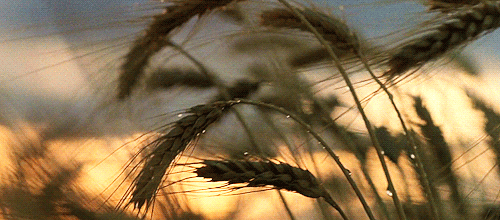
I hope you all have a happy autumn season (or spring, if you live in the southern hemisphere!).
116 notes
·
View notes
Note
I want to learn seidr but idk where to start or what resources are even valid and not tainted by bigotry or transphobia. A lot of posts are very vague, too. So I have no idea what they actually mean. Any thoughts?
Hello! Thank you so much for the ask.
Seiðr is quite the mysterious practice, which is why you must have found difficult to find trustworthy sources, or even one that could clearly define its nature. We currently know very, very little about it. What we do know for sure is that it was a form of pre-Christian magical practice, the uses of which stretched from divination to healing, luck-bringing, controlling weather and making game plentiful (archaeologist Neil Price). It was neither a force of "good" nor one of "evil", as it could also be used to fulfill malicious purposes, such as to cause conflicts or cast curses.
Unlike galdr, which was often practiced by men, seiðr was seen as a rather "feminine" practice. But as always, there have been exceptions to this: after all, mythology has it Óðinn himself, in his eternal search for knowledge, had learned to master seiðr! Though it was considered dishonorable for men to practice it back in Iron Age Scandinavia, it was common enough for a word to describe such men to emerge: seiðmenn. For this reason, neither galdr not seiðr are (or ever have been) confined to specific genders. This, I felt compelled to specify, especially since you've mentionned having stumbled upon many transphobic posts in your research. Galdr and seiðr do not belong to any given gender.
Another difference we could find in modern practice as opposed to historical practice is the means to reach the seiðrkona's staple trance. Archeological finds have informed us that the practice often would have involved trance-inducing intoxicants, which would have enabled the practionner to receive visions and use divination. It's possible for us to recreate such conditions in vastly different ways, namely, using music, chants, repetitive motions and the like.
Now, what's interesting to note is that the Goddess Freyja was also said to be a master of the art. Since she is often thought to be the archetype of a völva, magic practitionners who famously carried a long staff which was crucial to their craft. The term völur actually means "staff carrier", or "wand carrier". This means that to anybody seeking to re-construct this practice, the use of some sort of staff would be near essential.

Though the accounts describing völur and their work are sparse, it's still possible for us to make out a few recurring informations: they were wanderers (and were generally viewed as standing apart from society), which makes them likely to have had some sort of connection with the God Óðinn, and they went from village to village to offer their help and insights. When welcomed into a household, it's very likely they would have been offered to sit at the head of the table, replacing whoever was the head of house in their seat. This means that their presence was considered of the highest respectability. If you're interested in learning more about völur, I suggest checking out the Saga of Erik the Red, which contains the most detailed account of a völva known today.
Another interesting detail to be noted about seiðr is that weaving, whether it was physical or metaphysical, was a central part of the practice. After all, the Norns, who weave the Wyrd, are said to be the greatest of Seiðkonur. Another mythical element to support this theory is that Freyja as a deity seems to share lots of common points with Frigg. In fact, it's very likely the two were worshipped as one deity at some point in time, and depending on the areas. While Freyja is said to be a magician, capable of surviving a pyre thrice, famously, Frigg is more a clairvoyant master of divination, able to foresee the future. And both these different types of witchcraft could very well be considered seiðr practices! Now, Frigg is often depicted weaving using a spindle. That's because her myth has it she is the one who weaves the clouds, and is therefore a talented artist in this domain, which furthers the connection between magic (or at the very least, divination) and the textile arts. It's also interesting to note that the Nornir and Frigg have one major element in common: their ties with fate. While the Nornir weave fate, Frigg knows everything that's to come in the future, though she never speaks a word of it. This particular element of their respective stories greatly emphasizes the imortance of divination and foresight within seiðr practices.
Though I do work with witchcraft, I don't consider myself a practionner of this art per say. That's because oftentimes, the nordic magic I use takes the form of rune-carving, a practice inherent to taufr instead of seiðr. What little information we have on seiðr is unfortunately not enough to determine exactly how it was practiced, apart from the fiew hints here and there. I'm sorry that I can't be of much more help concerning this topic, but I'll link below a few online articles to check out if you're interested in some further reading.
Seidr
Seiðstaffs of the Völur
Encounters with Völur
Seiðr & Shamans: Defining the Myth of Ritual Specialists in pre-Christian Scandinavia (online)
Manning the High Seat: Seiðr as Self-Making in Contemporary Norse Neopaganisms
Interpreting Old Norse Magic: A Thematic Analysis of Seiðr, According to Runic Inscriptions
The double world: seidr and the problem of Old Norse 'magic'
I will also suggest the book The Norse Sorceress Mind and Materiality in the Viking World and this video, which dive a lot deeper into the topic than I could. The YouTuber Arith Härger, who has multiple times stated his adherence to inclusive heathenry, has posted multiple videos on seiðr in the past, as well.
164 notes
·
View notes
Text

When the earth is at its most quiet
And peace has settled within every heart,
Is the King of Kings best heard,
When the song of His presence resounds.
Hear Him and find solace in Him:
Find peace in the dirt under your nails,
And stillness after the storm;
Harmony in crooked trees,
And sacredness under their bark.
His steps make the winds to rise,
His breath makes the snow to melt,
His voice makes the earth to wake,
And His words make the sun shine down upon the fields.
Listen to the call of spring and hear;
Hear the brother of Freyja
As He rides above the clouds
As He sails across the sea
Lighter than a flower in the wind.
Listen and feel your spirit sing,
For the Son of Njörðr
Brings peace to the mind
And quiets all worries.
He is the bright flame that burns in Álfheimr,
Sitting on the throne of the elves,
Leading with a gentle hand,
Shining brighter than gold.
He is the light that glows before dawn,
The chiming of bells that foretell joy,
The swelling of your heart on a sunny morning,
The enthralling fragrance of gardens and youth.

54 notes
·
View notes
Text
I became quite fascinated by this passage from Tacitus’ Germania, in which he gives his account of the divination methods of the Germanic tribes. Very recognizable among them is rune-casting, which he describes, interestingly, in a way that makes it seem more commonplace than most other divination methods. Another point of interest is the importance of horses in the reading of omens among the tribes studied by Tacitus! Always great to find accounts of such rarely documented practices. I am actually working my own translation of this passage, as a challenge to myself!
“For omens and the casting of lots they have the highest regard. Their procedure in casting lots is always the same. They cut off a branch of a nut-bearing tree and slice it into strips; these they mark with different signs and throw them completely at random onto a white cloth. Then the priest of the state, if the consultation is a public one, or the father of the family if it is private, offers a prayer to the gods, and looking up at the sky picks up three strips, one at a time, and reads their meaning from the signs previously scored on them. If the lots forbid an enterprise, there is no deliberation that day on the matter in question; if they allow it, confirmation by the taking of auspices is required.
Although the familiar method of seeking information from the cries and the flight of birds is known to the Germans, they have also a special method of their own - to try to obtain omens and warnings from horses. These horses are kept at the public expense in the sacred woods and groves that I have mentioned; they are pure white and unclefiled by any toil in the service of man. The priest and the king, or the chief of the state, yoke them to a sacred chariot and walk beside them, taking note oftheir neighs and snorts. No kind of omen inspires greater trust, not only among the common people, but even among the nobles and priests, who think that they themselves are but servants of the gods, whereas the horses are privy to the gods' counsels. There is yet another kind of omen-taking used to forecast the issue of serious wars. They contrive somehow to secure a captive from the nation with which they are at war and match him against a champion of their own, each being armed with his national weapons. The victory of one or the other is thought to forecast the issue of the war.”
25 notes
·
View notes
Text
Nine unique ways to reconnect with nature
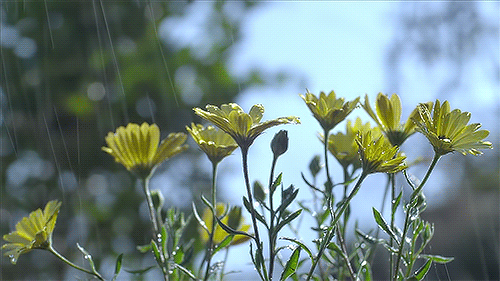
Why nine? Because it's the sacred number of my path. In my experience, for people like us who need a certain amount of spiritual practice in their lives, feeling close to nature does wonders for the mood. And I know this is easier said than done, which is why I wanted to share a few personal tips, all related to some extent to self care. After all, I feel like we underestimate the tight link between mental health and this feeling of “closeness” with the earth.
Find the sacred in plants, or animals you've always been drawn to. How can you explain this particular connection you feel? Your intuition often reveals truth.
Collect what you see, and don't be afraid to hoard trinkets like treasure. Cool rock, cool stick, cute acorn, fragrant flower, fallen branch... Whatever tickles your fancy.
Go out of your way to enjoy what every season has to offer. Garden in the summer, or chill at the park, carve a pumpkin during the autumn, make hot cocoa during the winter... Find ways to be cozy in every weather!
Look out the window. Do it as often as you can. Look at the sky, observe how windy it is, how bright the sun is, how thick the clouds are!
Give names to the natural elements around you. Simply calling a tree, plant or animal by the name of its species does the trick: names are powerful, and they show that you acknowledge the spirit that resides in everything that lives.
Learn the stories, as many as you can. Anything folklore related to your area! Folklore hides a great deal of generational wisdom and beliefs, and it reveals such a powerful connection between the people and the land.
Cook with fresh ingredients. No need to grow your own everything, or raise your own chickens, or adopt other such backyard farming activities. Simply by making meals out of fresh, local products as often as you can, you might feel as one with the land thanks to which you are fed.
Stop feeling silly when indulging in aesthetics. Make that Pinterest board filled with pictures of flowers! Listen to that song that makes you feel like a woodland fairy! Put on that long, flowy skirt, or that cardigan with knit mushrooms on it! Through these seemingly trivial little joys, we may experience a connection with ourselves that's crucial to feeling close to our mother earth.
Use your hands: craft artsy projects if you can, dig your fingers in the earth, and brush the bark of trees! You body is your best tool when it comes to feeling grounded. It's always the part of yourself that's closest to earth. To use it is to honor it, and to care for it is to care for yourself.
If you reside in the Northern hemisphere, have a great spring season! Hail the King of the Elves and the spirits of the land 💛

270 notes
·
View notes
Text
Holy spaces & shrines in the modern norse path

Before we dive into the oh-so-diverse topic of holy spaces, let me first specify a few practical tips!
I’m very much aware that the definition of the term “holy” is deeply subjective and varies depending on one’s opinions. I’ll elaborate on a few of my thoughts on the topic further!
In no way are you bound by any rule regarding this aspect of paganism.
I will base my post off of my research, granted, but also on my personal experiences and practices!
Now, what makes a holy space sacred? Not necessarily "holy" per say, but simply sacred.
The very first factor to consider is, what is sacredness? Lots and lots of pagans engage mostly in solitary practice, so much is true. Which is why lots of us find ourselves gravitating towards spaces others may not necessarily find any sense of "sacredness" in. The corner of your room where you tend to pray the most? Sacred. Or the spot in your garden where you perform your harvest ritual every year! It’s the connection we feel to the space that makes it sacred in the first place. But a space being holy depends on whether or not we choose to anoint it in such a way.
When something is sacred to me, I tend to feel a sort of spiritual pull. A swelling of the heart, if you will, like the feeling I get when faced with a breathtaking landscape. The feeling of spiritual connection to a particular spot is the first intuition one needs to tune into when choosing a holy space. After all, staying in tune with one's intuition might be one of the most important aspect of any spiritual practice.
Within nordic practice, a holy space is often called vé, a sacred enclosure. Vé's are attested in numerous toponyms as well as ancient texts, such as Beowulf, or the Skáldskaparmál. Their omnipresence in Scandinavian toponyms might, when considered through a pagan lense, signify something quite interesting: the holiness of a space depends on the space itself, its location, rather than what's inside it— or rather, how grand and ornate it is. When building a holy space for oneself, one does not need lavish decoration, or an elaborate shrine with the gold foil and the statues.
However, there are a few steps one can follow in order to anoint a space as holy, if one wants to reconstruct a few practices from pre-Christian Scandinavia. Although I'll specify that as always, no rule is set in stone when it comes to neopaganism. The choice to abide by them or not is entirely up to the practitioner. And in any case, even as I was gathering these few ideas, it was clear that, as always, pre-Christian practices centered around holy spaces vastly differed depending on the place and the time. Regardless, I think it's fun to do some research on the topic in order to reconstruct on our own terms a holy space in the nordic tradition.

The first step? Having a good knowledge of your area. Both before and during the Viking Age, holy places were more often than not located outside. It can be a great help to know where to find the greenery in one's area. Is there a beach near home that the public has access to? How about a large park where you can spend some time alone without being bothered? Even your backyard does the trick! Anywhere you can see the sky and breathe the open air is already perfect. Now, the Germanic tribes would generally worship near an object of particular importance, such as a grove, a body of water, a clearing in the forest, a hill... Although this doesn't seem to be very present in historical attestations, and considering I'm devoted to Yngvi-Freyr, I'm an especially big fan of worshipping in plains, or fields!

I think it's important for me to note that if you are lucky enough to live near a body of water, you can choose to engage in one of the most popular forms of offering in nordic historical practice: throwing offerings out to sink into the water! This practice was especially widespread, evidence of it having been found as far as Britain and Iceland. Evidently, if one chooses to engage in such a practice, it's important to respect the ecosystems and stick with offerings that won't damage them (acorns, stones, flowers and the like). As for an outdoors shrine located in a forest, or near woodland, it would have been customary during pre-Christian times to center a holy space around a tall tree, perhaps representing the World Tree Yggdrasil.

Considering lots of neo-pagans prefer to keep their practice discreet, it goes without saying that the holy space of your choosing does not need to be especially big, nor especially decorated. It can be as small as it is humble! One of the spaces where I most like to worship is the little corner of the yard, tucked under a cedar tree, where I rebuild my hörgr every year, as soon as the snow melts for good. Nothing too flamboyant!

Now, the second step to building a little outdoors shrine for yourself is to choose a representation of the deity to adore. It's said that the human-like appearance of this representation mattered little to the Germanic tribes, whose representations of the Gods could be rather simple, and not especially ornate. For this reason, it would be perfectly logical to even choose an object associated with the deity in question to serve as the main representation placed in the sanctuary. If we're talking about Freyja, a falcon statuette, or feather could do the trick! As for Fenrir, any wolf imagery could work as well! In the case of Thórr, one could replicate the case of Donar's Oak and choose to center their shrine around a particular tree (the rowan are the oak would make the best choices, if one is to pick a tree sacred to Thórr). These are just examples, and the possibilities in this regard are limitless. This "main" representation can be used as the center of your sacred space, and given offerings during rituals or celebrations. In my case, I like greet this representation both when "entering" the sacred space and when leaving it, as a sign of respect!

If one so desires, it's possible to set up some kind of "delimitation" in order to mark the entrance of the sacred space, or its outline. I like to place either ribbons on nearby branches, or litter stones here and there to lie in a loose circle (we wouldn't want to block the rays of the sun from reaching the earth and keep the greenery from growing). In order to signal the entrance of shrines, the Germanic tribes would generally use heaps of dirt or pillars of stone, among other things.
Another intresting element one might include in their sacred space is the presence of fire! Whether this be a bonfire, incense, a simple candle or even just a handful of ash, there's lots of ways to include the "element" of fire into a modern day shrine. It's a means of warming up the space, so to speak: tending a fire in the shrine is akin to having a hearth in the home!
Ideas for common, historically attested offerings: Ethically-sourced animal bones, gold or golden jewelry, tools, representation of the Gods, beads and beaded jewelry, alcohol, food and meat…

Now, let's pull away from the history lesson and let's dive into modern, neo-pagan practice! I'd wager some of you are wondering, how exactly can one keep a whole shrine, but make their practice as low-key as possible?! After all, I know firsthand that solo practice is especially common among neo-pagans. So my answer to this question is, who said anything about keeping? One piece of advice I've already given to a few fellow pagans in the past is to create a little portable shrine all to yourself! Let me explain myself: you arrive at your chosen location, you put down a basket full of decoration and you put up a temporary space in which to worship for an hour or two. You take out a deity representation, a few candles (if they're allowed on site!), a handful of offerings and a cloth on which to place them. And when you're done with the ritual, you pack up your things and make sure you leave the site as clean as when you first found it. In other words, what I’m suggesting is the possibility of gathering a few designated worship items in order to make oneself a portable, personal little shrine! It might seem like a silly idea at first, but I’ve discovered it’s not only a fun habit, but it’s also greatly helpful on a tight schedule to have a quick and easy way to engage in outdoors practice.
As always, I wrote this post aiming to help fellow pagans find ways to balance historical practice and modern, solo practice! I hope these few ideas did the trick, and wish you all a good and plentiful spring season!
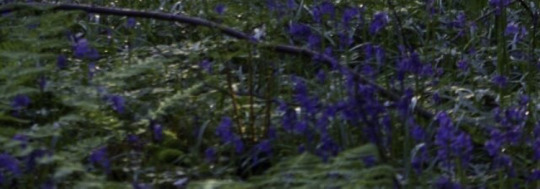
First picture
135 notes
·
View notes
Text
The steps to my May Day celebrations!

Cleansing shower! Since I’m a big fan of body care products, this year I’ve bought all natural flower-scented soap and cream for the occasion. Although I don’t always have the time to perform such a cleansing ritual before every festival, it’s a tradition I’ve come up with for myself and which I enjoy very much. Feeling refreshed before blót or other such rituals helps me to get into a positive mindset.
Go out! Even just go take a walk around the block if that’s all the time I’ve got. Spending time in the forest is ideal, and I think May Day is such a wonderful time to observe the snow melting and other such changes.
Open the windows and light candles and incense. It’s a cleansing of the house that I enjoy performing around the spring equinox. If I have the time, I generally choose this moment to do some cleaning: out with the old and the useless stuff that’s been lying around for way too long!
Flowers are my favorite spring time decoration by far, and they’re absolutely indispensable when it comes to celebrating May Day in my home. I generally take a walk to my local flower shop and buy a bouquet! It’ll serve to decorate the table for the night’s dinner.
I usually take the time to bake a little something, as a devotional act to Lord Freyr. As I’ve mentioned in this previous post, I also love to cook using boar meat in His honor. This type of meat isn’t always easy to find however, but any local game meat does the trick as well.
The movie fanatic that I am has become a little obsessed with the film The Wicker Man (1973), and I’ve turned it into my classic May Day movie. I generally rewatch it at this time of year, although it’s nothing spiritual at all. However, if you’re interested in watching it, make sure to look up all the warnings related to it beforehand. It is considered a horror movie after all!
My blót for May Day usually happens around sunset, around a bonfire. I generally perform it in honor of the Vanir and/or the landvættir, depending on the year. I make the offerings out in the garden, to ask for a plentiful summer!
Afterwards is the feast, a dinner that I (try to!) prepare from scratch. One plate is left out on the windowsill for the hidden folk.

41 notes
·
View notes
Text
Heathen-izing your spring celebrations
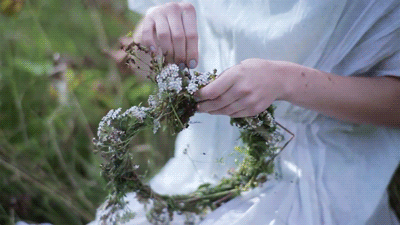
The earth wakes up from its slumber, snowdrops poke through Skaði's coat of frost, yada yada. You guys know I'm not such a huge fan of spring. I do have, after all, a favorable bias towards winter (sue me). However, something paganism has helped me develop is the taste for each of the seasons our planet has to offer. Having worshipped Freyr for quite a long time, I've come to appreciate the beauty of spring. For one, the celebrations that come with the equinox. Spring festivals carry quite the unique, undeniable excitement, after all! Which is why I'm very happy to share some of my personal practices and ideas regarding norse-paganism oriented spring festivals.
Quick disclaimer! Unlike Jól, the celebration of spring in Iron Age Scandinavia and within the Germanic tribes is quite poorly documented. We've got access to little to no sources describing practices surrounding spring or the spring equinox. Still, I hope this handful of personal ideas and practices prove useful to you! I've summed up a few interesting historically attested (or attested-ish) practices as well, but I suggest looking into them by yourself if you're interested in more detailed information.
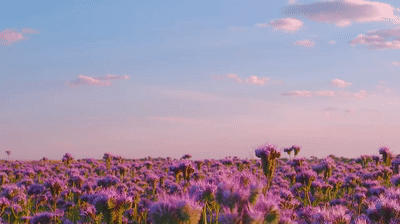
The basics
I'm going to assume that many of you are already familiar with what neo-pagan sources generally consider the "symbols" of the spring equinox. Why the rabbit? Because spring marks the beginning of the mating season among hares and lagomorphs. Why the eggs? Because they're a symbol of birth and renewal. Still, neither one of these symbols has any strong ties to historical practice, least of all in Germanic traditions. In the case of Scandinavian practice specifically, the painting of eggs is more often than not believed to have originated within Christian circles before moving north. That doesn't mean, however, that the symbols of hares/rabbits and eggs can't be used in pagan practice! I use them to decorate for the spring equinox no matter their origin, simply because I really do think they fit with the mood, for the reasons previously mentioned. I also love using local symbols of spring, such as snowdrops, to decorate. If you're looking to weave more norse pagan tradition into your celebration, phallic idols/representations are the way to go. They are a major symbol of Freyr, who is closely tied to spring. By worshipping this symbol, you are asking for the prosperity of the land! You can start by "cleansing" the symbol, so to speak, using incense smoke or water depending on what material it is made out of. I tend to use melted snow to cleanse it, to further the symbolism of spring. If you're on a budget or simply aren't interested in buying such an idol, anything can still be turned into a phallic symbol, honestly. A simple tree branch you've picked up outside could do the trick nicely, after you've trimmed away whatever sticks out of it! This is just an example, but I'll trust your creativity to find anything that you feel work as a phallic symbol.
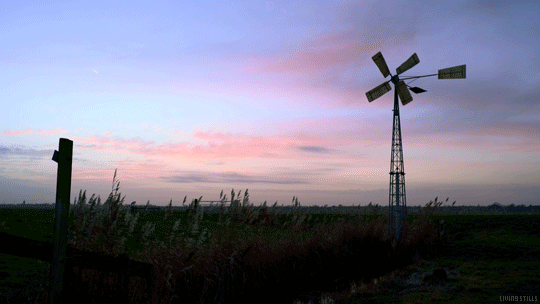
Deity work/worship
At this time of year, it's also pretty commonplace to make offerings to the Vanir, the landvaettir and your local Dísir! You can thank them for the summer that has passed, and the one that’s to come. You can ask for a plentiful year, and for an abundance of resources. If you’re not sure how to go about working with landvættir, I suggest taking a quick look at this previous post I made on the topic of land spirit work. Landdísir are especially venerated by neo-pagans at this time of year, because they are considered the guardians of one’s land. By offering something to them, and/or the landvættir, you show your respect for the land itself. I’ve already spoken a bit about worship of Freyr for the coming spring, but let me dig a little deeper on that topic. I almost feel compelled to do so because his association with spring was so widespread that he was at the center of an important springtime festival called Disting. This festival was especially important in Uppsala, where large numbers of people would gather to make sacrifices for victory, and where lovers would allegedly exchange gifts. However, Disting and Dísablót are very often mixed up, as the difference between the two vary depending on the region. But back to our main topic: springtime Freyr worship today. Effigies of boars make for great decoration to invoke the benevolence of the King of Kings. After all, the boar held a major role in his worship: it's generally viewed as his fylgja, and boars were sacrificed to him on Yuletide, according to the Hervarar saga ok Heiðreks. This is the reason I treat my loved ones and myself to boar meat around the equinox, or when it's truly starting to feel like spring. I cook a meal out of boar (trying to change up the recipe every time!) and share it around to family members or neighbors. In fact, the act of sharing has become quite an important part of my worship of Freyr. It allows me to embody his generosity and benevolence! You could see this as a form of devotional. Now if you’re looking for more ideas on Freyr worship, this other post I wrote could prove useful!
The next deity I'll be touching on is the Anglo-Saxon goddess Eostre (otherwise called Ostara), who understandably comes up often when researching the Vernal equinox. We unfortunately know very little about her, including whether she was ever worshipped in history. One thing's for sure, though: she is certainly worshipped by many pagans today, which is why I would suggest looking, not only into historical sources, but also into SPG and UPG if you're interested in devoting a ritual/offering to her. She is heavily associated with dawn, which is why her devotees will sometimes wake up to see the sun rise on the day of the equinox. Dew and flowers are common offerings to her! While I’m at it, let’s talk about flowers some more. They are your best friends when it comes to decoration! Natural ones obviously feel a little more lively, but it’s also perfectly fine to use artificial ones, or even ones made out of paper! They make excellent material for crafts, and having flowers inside the house can be likened to inviting spring itself within your home.

At this time of year, many heathens also engage in Sigrblót ("victory sacrifice"), a blót for victory, or success. This conveniently aligns with Freyr worship, which is often oriented towards finances, personal success or else, due to his association with fertility. The Sigrblót was attested in the Ynglingasaga, though it could be better described as a celebration of the coming summer rather than of spring itself. Now, this celebration is sometimes called Somarsdag ("summer's day"), and it's often said to happen on the fourth full moon after Jól, or on the 16th of April. However, if you aren't tied to any particular group and tend to perform blót alone, I'd say Sigrblót could very well be celebrated on any designated day which feels right to you. Pretty much all the information we have on that sacrifice is speculation, but it would make plenty of sense to perform it around the equinox, in my opinion. The Sigrblót is the perfect occasion to set some goals for yourself! After all, you’re asking for victory! What’s a project you wish to see succeed this year? Since Óðinn is very tightly associated with victory, you can choose to involve him in this ritual, by devoting an offering or a song to him, for example.
Another practice that’s great for a springtime celebration is lighting a fire! It’s a great way to symbolize the return of the sun and warmth. If you are interested in sun worship or if you already actively engage in it, this is an opportunity to do something for Sól! This activity is something that makes for a beautiful devotional. If your area is already pretty warm and if you’ve got the right fixtures, why not make a bonfire outside! And if your area, like mine, still looks like it’s halfway through January, a fire in the hearth will do the job perfectly. Lighting candles does the trick as well, and what's useful about them is that you can carry them around your home, so as to “spread the sun’s light” in your living area, and set them on windowsills to welcome the sun! I actually usually couple the lighting of the hearth with the Sigrblót. Once the blót is performed, I can throw written prayers or wishes in the fire. Though it doesn’t stem from any historical ritual, I’ve developed the habit of carving the simple shape of the Isa rune on a piece of wood, which I throw in the fire to symbolize the end of winter, the melting of the ice! A means of saying goodbye to winter that’s passed, so to speak. If you’re working with candles, this could be done by writing the rune on a piece of paper.

181 notes
·
View notes